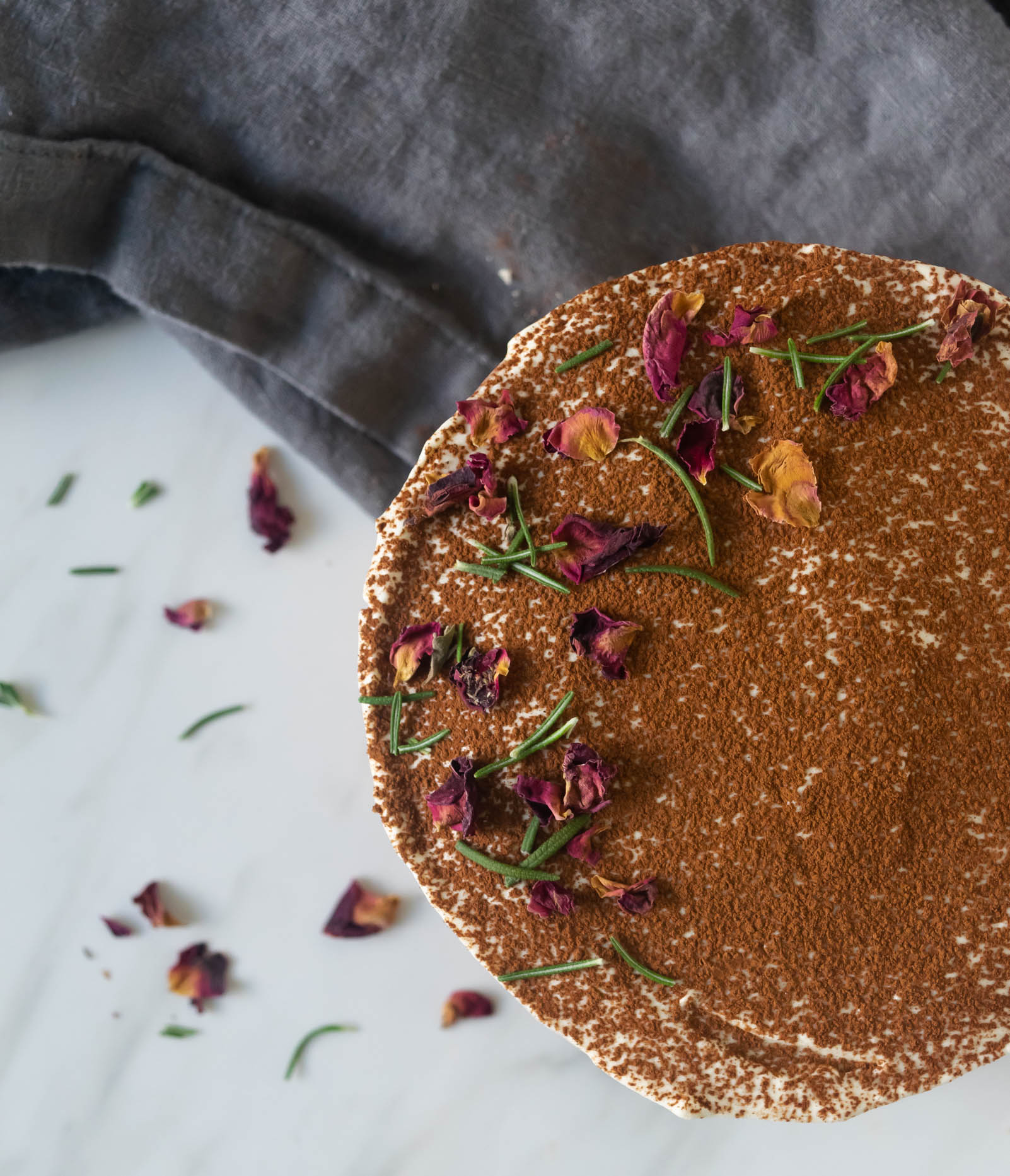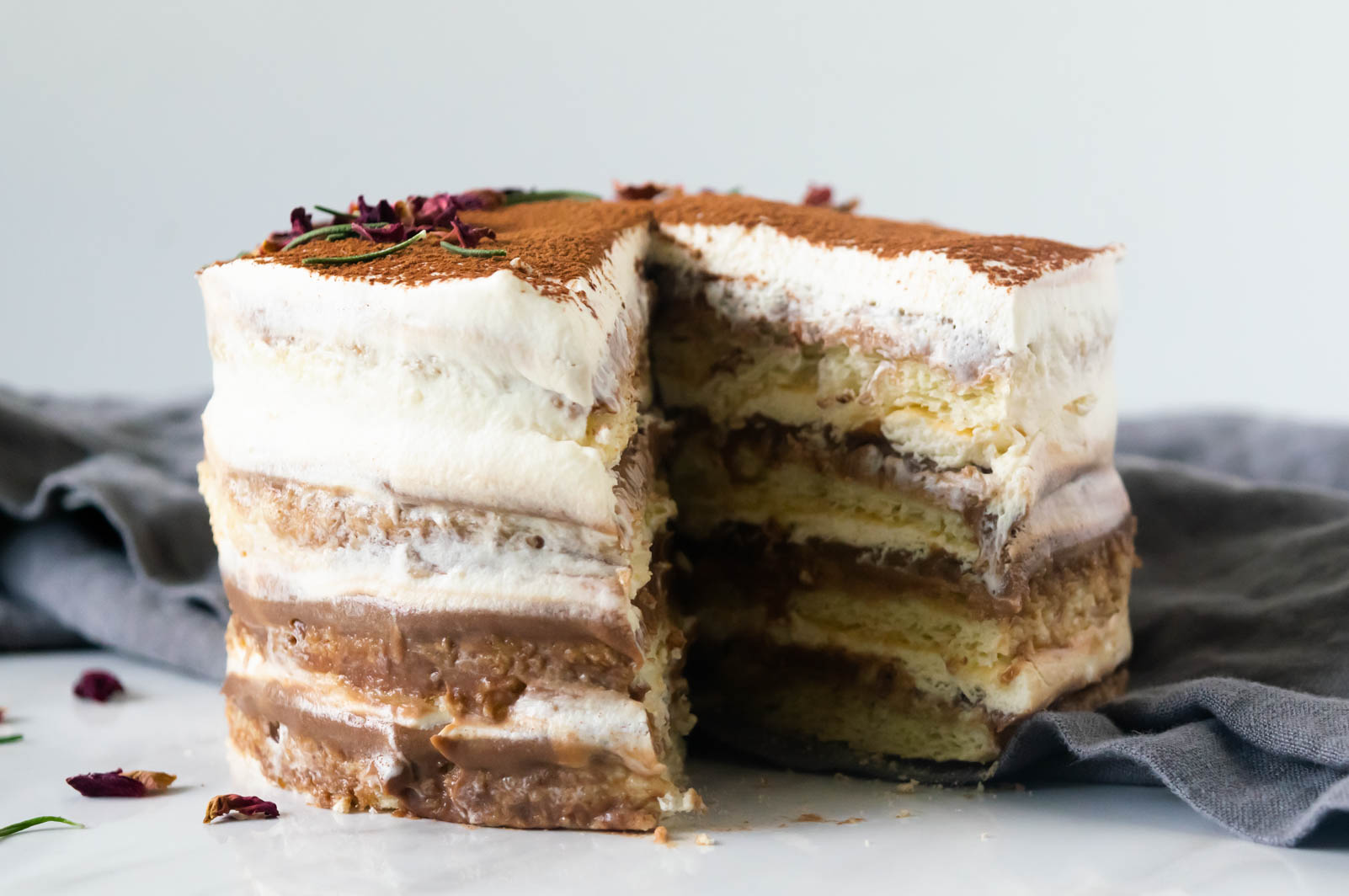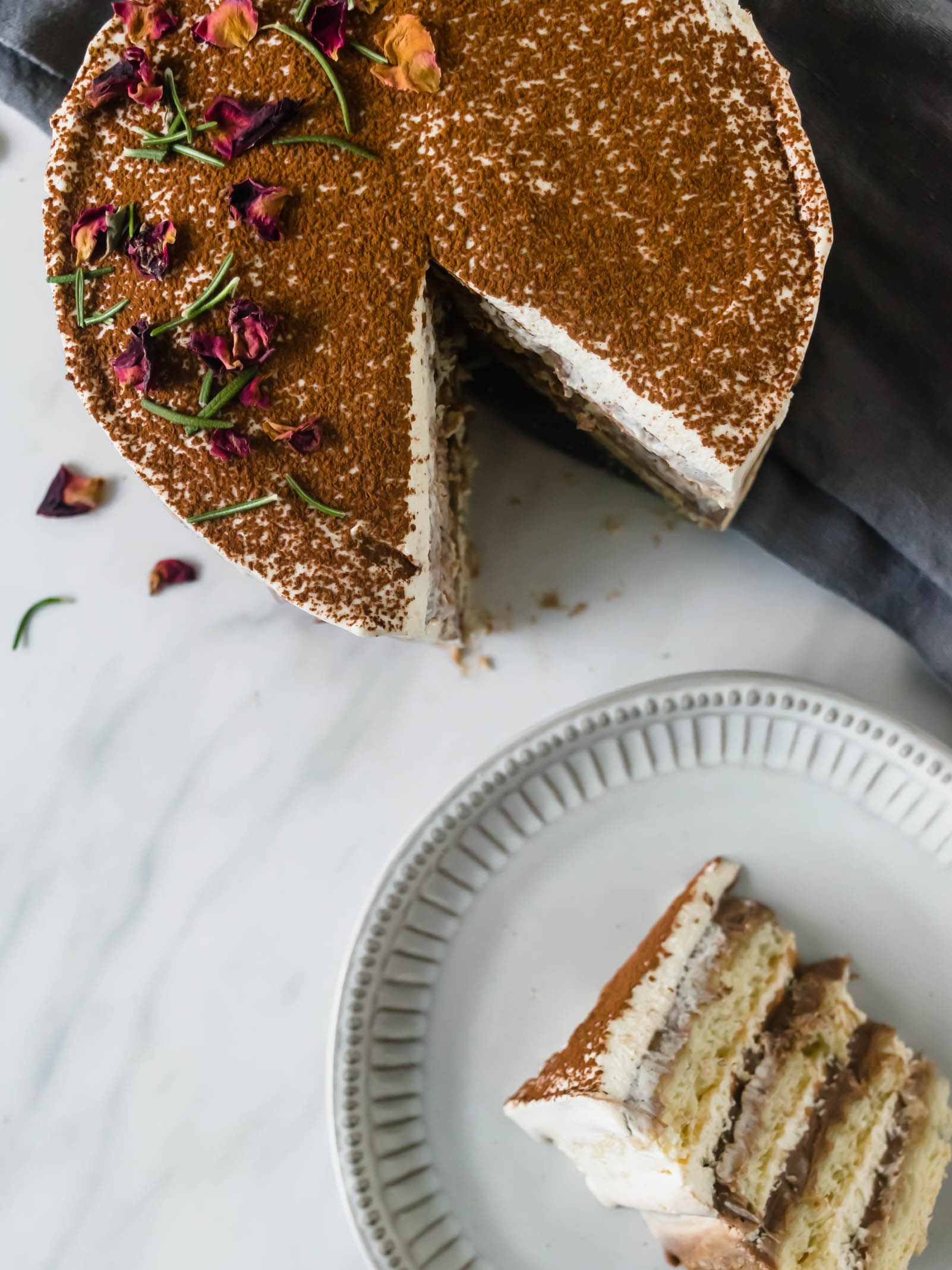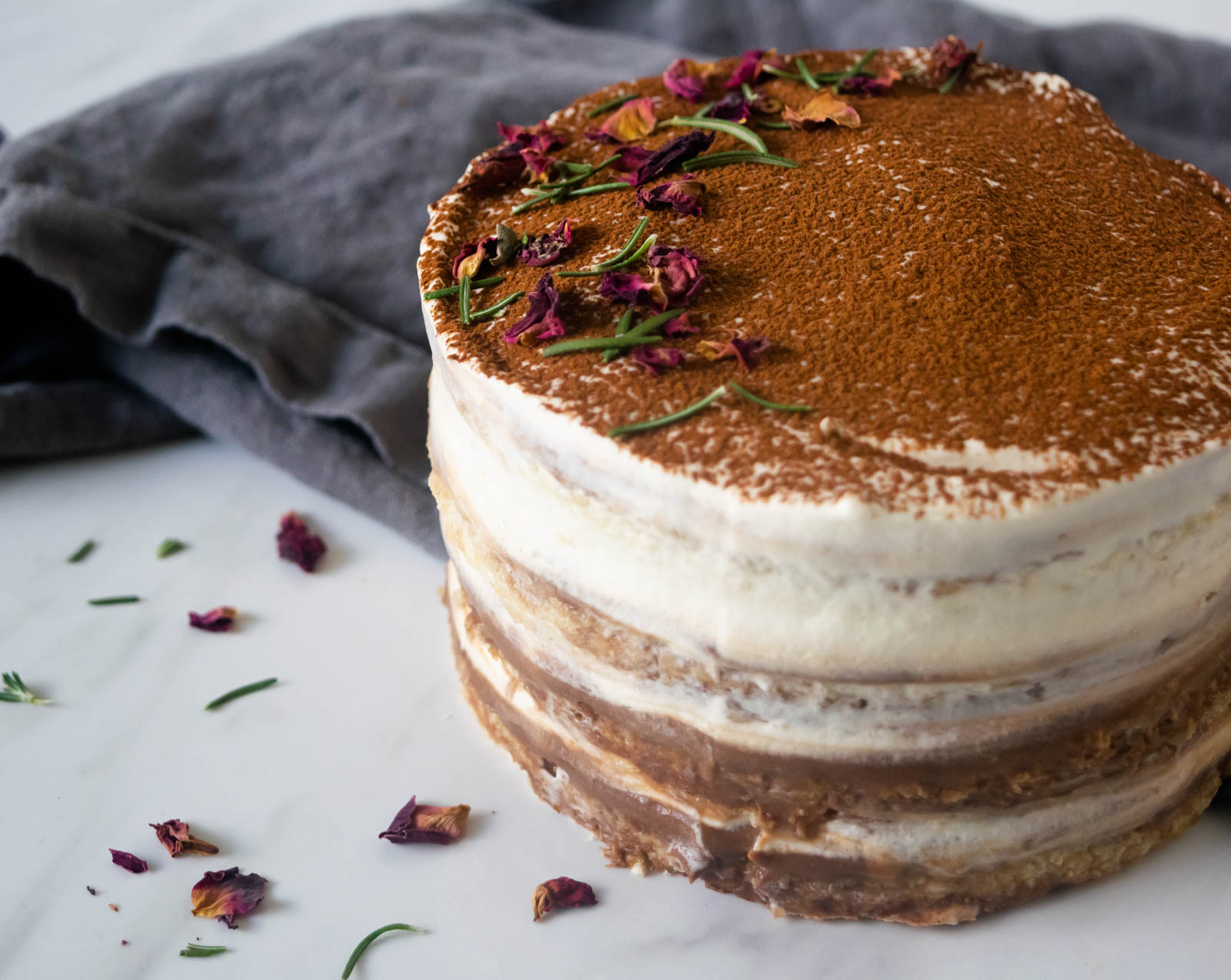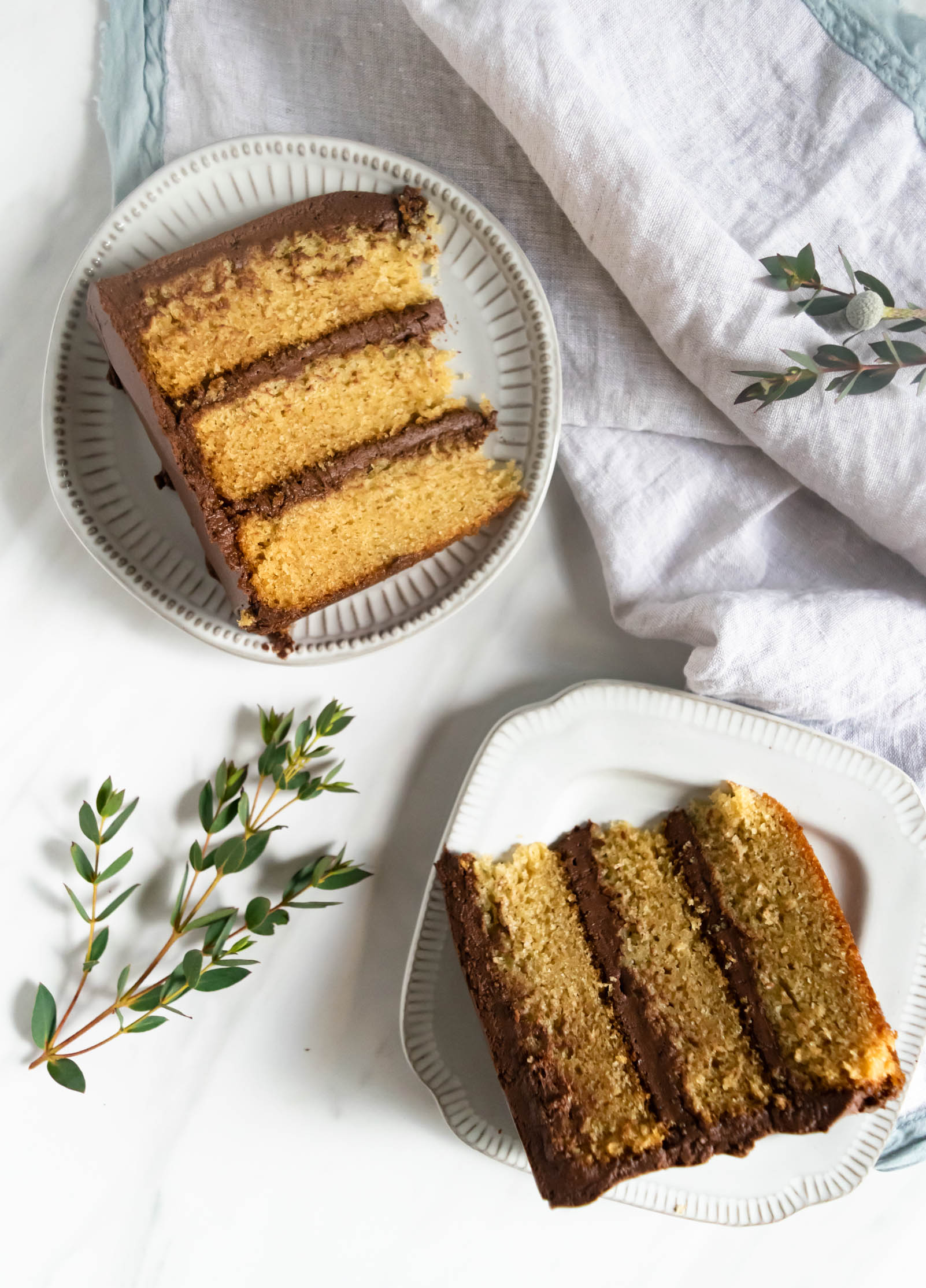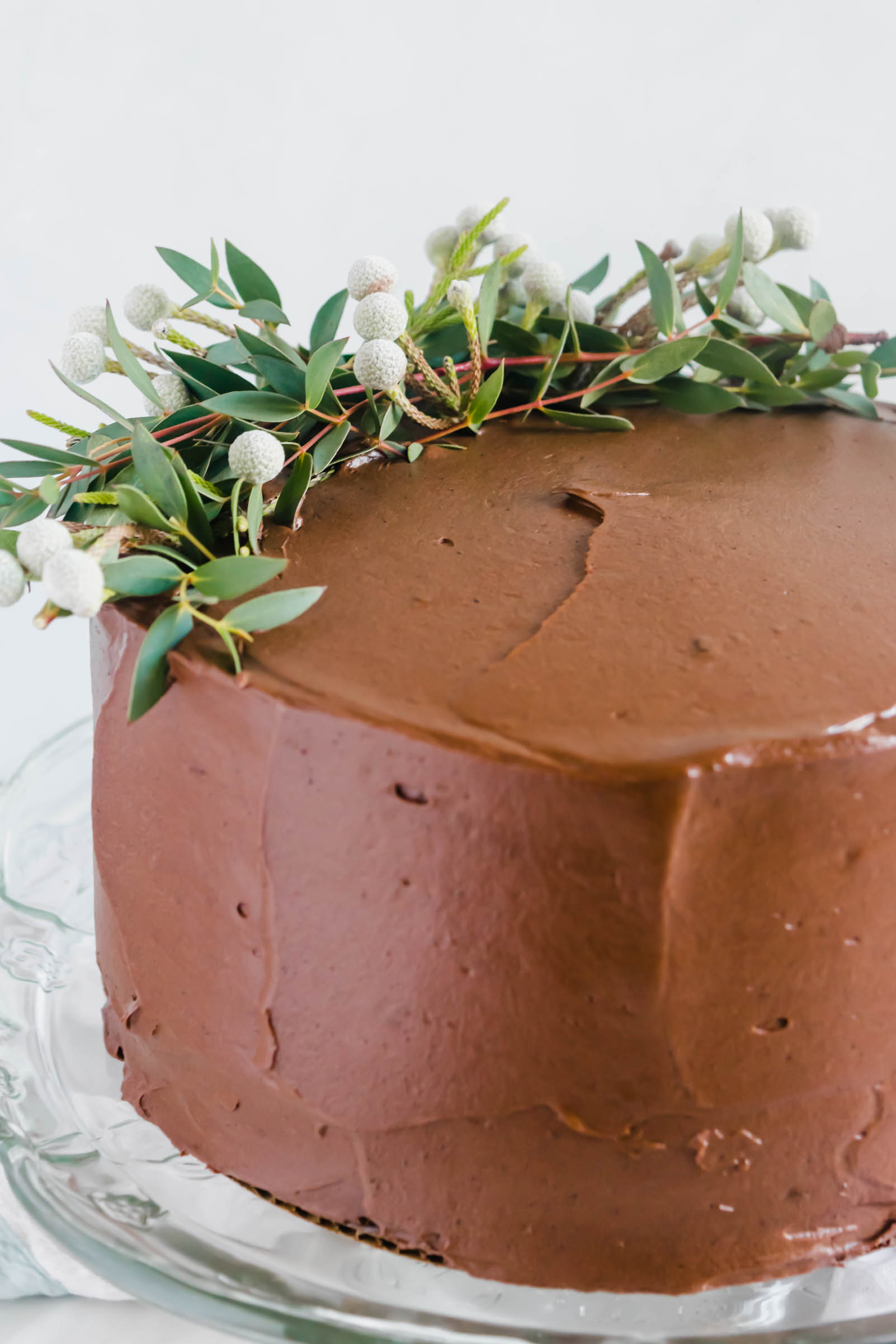Wilderness Tiramisu
/Transitions call for cake. All too often, we are quick to celebrate the exciting things in life- graduations, weddings, babies, promotions- things that show achievement and accomplishment. These are all great, but I would like to submit that the halfway points and routine steps along the path are worth celebrating too. These moments are the ones that seem quieter, routine and mundane, yet often more challenging. They are the moments when gratitude and joy are most needed, but sometimes hardest to find. For me, cake is something that you create with your hands, built layer by layer, resulting in a final product fit for an accomplishment or a regular day. It’s an important little reminder that though you’re not there yet, you’re moving and that’s what matters.
I’ve been spending the last few weeks winding down and finishing my last exams in pastry school, while also preparing to leave my comfort zone and stretch my talents as I start my final internship. It’s a perfect time for transition cake. This is a riff on a cake that I completed for my contemporary cakes practical and is more of a blueprint; you can build it any way you like. Rounds of ultra-light, lady-fingeresque sponge cake are soaked with a rosemary coffee syrup and layered with dandelion and rose chocolate pastry cream and mascarpone mousse. Make it as tall or as wide as you please, dust it with cocoa powder and pretty little florals, and sit back to enjoy the fruits of your labor.
Wilderness Tiramisu
Yield: 2 5” 3 layer cakes
Ingredients:
for the vanilla sponge:
4 egg yolks
4 egg whites
1 cup sugar
1/2 cup all purpose flour
1/4 cup cornstarch
Pinch of salt
for the dandelion rose chocolate pastry cream:
1 1/2 cups whole milk
1/2 cup heavy cream
3 eggs
1 egg yolk
3/4 cup sugar
3 tbsp cornstarch
1/4 tsp salt
1 1/2 tbsp butter, softened
5 tbsp roasted dandelion root tea (or 5 tea bags)
1 tbsp rose petals
3 oz dark chocolate, chopped
for the mascarpone mousse:
1 1/2 tsp powdered gelatin
1 cup heavy cream
4 egg yolks, at room temperature
2 tbsp Kaluha
2 tbsp sugar
1 tsp vanilla
1/2 tsp salt
8 oz mascarpone cheese, at room temperature
for the rosemary coffee syrup:
1/4 cup brewed rosemary coffee, see notes below
2-3 tbsp rosemary simple syrup
2 tbsp Kaluha
Procedure:
to make the sponge:
Preheat oven to 375°. Line a rimmed baking sheet (18x23) with parchment paper.
In a mixer fitted with the whisk attachment, beat egg whites on low speed until slightly frothy. Slowly add ½ cup sugar, gradually increasing the speed to medium, and beat until a stiff meringue forms. Transfer to a medium bowl; chill until ready to use.
Whip egg yolks, 2 Tbsp. water, and remaining ½ cup sugar in the still-messy bowl you used for the meringue on high speed until a fluffy, ribbony mixture forms. Using a rubber spatula, gently add reserved meringue and fold until just combined. *Be careful not to overwork the batter here, it’s okay if there are a few streaks!
Sift flour, cornstarch, and salt into a medium bowl. Gently fold into egg mixture until no dry spots remain. Carefully transfer batter to prepared pan with and smooth with a spatula.
Bake cake until top is golden brown and still soft to the touch, 7–10 minutes. Let cake cool completely in pan. Run a knife around sides of pan to release cake. Place a cutting board on top of pan. Invert cake onto board; remove pan and carefully peel away parchment. Use a cake ring to help you cut small circles out of the cake sheet. *I chose to do small, 5” circles, but you could do any size you want- just remember the larger your circle is, the fewer layers your final cake will have.
to make the pastry cream:
In a medium saucepan set over low-medium heat, warm milk and cream until bubbles begin forming around the outside of the pan. Add dandelion tea and rose petals. Cover pan and let steep for 30 minutes. Strain mixture and return to saucepan.
Reheat milk mixture until slightly simmering. In a medium bowl, whisk together sugar and cornstarch until no lumps remain. Add eggs and egg yolks and whisk until a paste forms.
Slowly, while continually whisking, pour half of hot milk into the egg mixture. Still whisking, add your egg mixture to the milk mixture and return to heat. (This process is called tempering and it helps to prevent scrambling your eggs when making cream based sauces, like pastry cream and creme anglaise.)
Cook pastry cream, whisking CONSTANTLY, until thickened and boiling.
Remove from heat and strain into a clean bowl. Add butter, salt, and chocolate and whisk to combine.
Press plastic wrap to surface and chill.
to make the mousse:
Place ¼ cup cold water in a small bowl and sprinkle gelatin evenly over top; set aside while you begin making the rest of the mousse.
In a mixer fitted with the whisk attachment, beat heavy cream on medium-high speed until medium peaks form. Transfer to a clean bowl, cover with plastic wrap and chill until you are ready to use it. Reserve bowl; you don’t need to clean it.
Set a medium, heat-proof bowl over a saucepan of simmering water. (Make sure the bowl is not touching the water.) Add egg yolks, liquor, sugar, vanilla and salt and whisk constantly until yolks are lightened in color, doubled in volume and are warm to the touch. Remove egg yolk mixture from heat and scrape into reserved mixing bowl. Fit bowl onto mixer.
Remove saucepan from heat and pour out water, then scrape in softened gelatin. Heat over medium-low, swirling pan often, until gelatin is dissolved, about 1 minute. With mixer on medium speed, stream gelatin into egg yolk mixture. Beat until sides of bowl are cool to the touch, about 2 minutes. Switch to the paddle attachment, add mascarpone 1-2 tbsp at a time, and beat until smooth.
Remove bowl from mixer and gently fold in chilled whipped cream. You should have about 4 cups mousse. Cover with plastic wrap, pressing directly onto surface and chill until you are ready to assemble the cake.
to assemble the cake:
Make the rosemary syrup: Combine 1 cup of sugar, 1 cup of water, and 3-4 rosemary sprigs in a small saucepan over medium heat. Cook until the sugar is dissolved and then remove from heat. Leave rosemary sprigs in syrup while cooling and remove just before you are ready to use. *This will make more rosemary syrup than you need to brush on the cakes, but I always like keep herbal simple syrups in my fridge to make fancy coffees and last minute cocktails.
For the coffee: You can simply make espresso/coffee, cool it and then measure out 1/4 cup. If you are planning ahead and want a little extra rosemary flavor, grind some rosemary leaves along with your coffee beans and then use that to brew coffee.
For the cake syrup: stir together coffee, rosemary simple syrup, and Kaluha. Taste and adjust flavors as needed.
Place one cake layer on a cake stand/board. Brush the cake with coffee syrup, and be liberal with it-remember, this is supposed to be reminiscent of tiramisu.
Spread a layer of dandelion pastry cream on top, followed by a layer of mascarpone mousse. (I like to use a cookie/ice cream scoop when frosting cakes to make sure that each layer is even.) Repeat this process for as many cake layers as you want.
Use the remaining mascarpone mousse to frost the sides of the cake in a swoopy, rustic style. Dust the top of the cake with cocoa powder and sprinkle rose petals and rosemary leaves on top as desired.
Chill cake overnight for best flavor!


